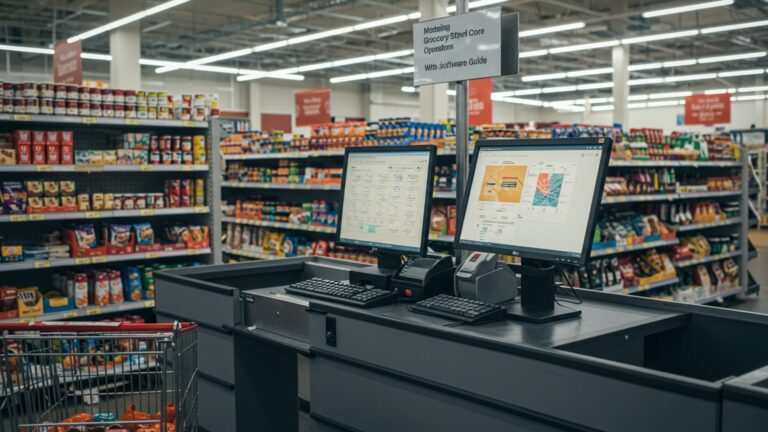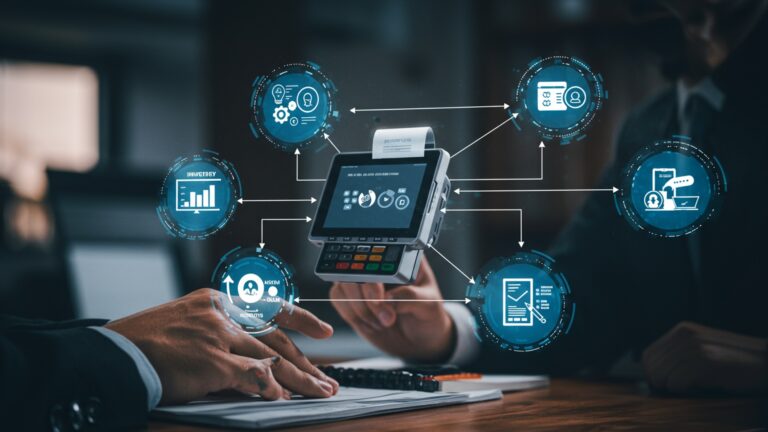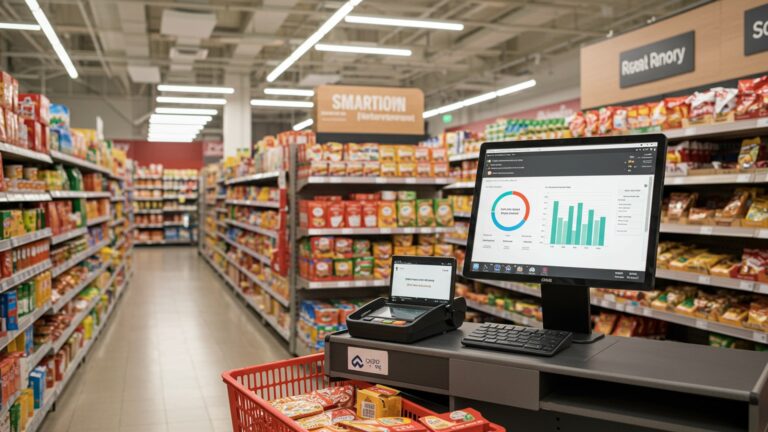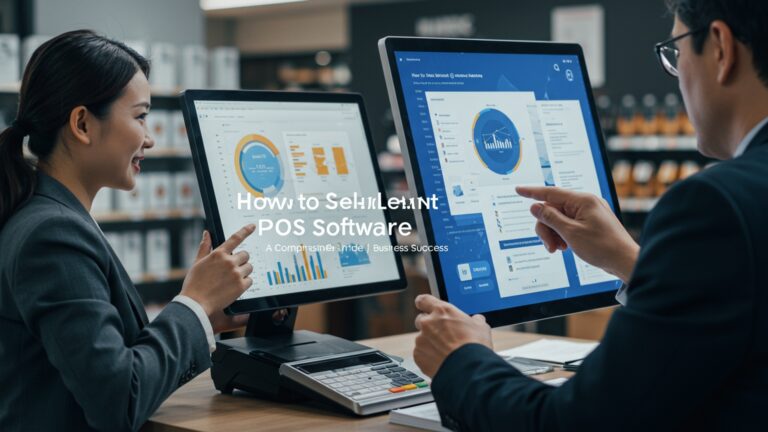How to Implement POS Software for Seamless Sales and Inventory Management
In today’s dynamic retail environment, implementing robust pos software is no longer merely a transactional tool but a strategic cornerstone for achieving operational synergy and elevating the customer experience. Modern systems transcend basic sales processing, evolving into sophisticated platforms that consolidate real-time inventory management, detailed sales analytics. integrated customer profiles. Imagine a bustling coffee shop using its POS to instantly track oat milk inventory across multiple locations, preventing stockouts during peak hours and ensuring consistent service. This proactive, data-driven approach, a critical trend for businesses in 2024, empowers merchants to streamline operations from checkout to supply chain, making informed decisions that drive efficiency and scalable growth.
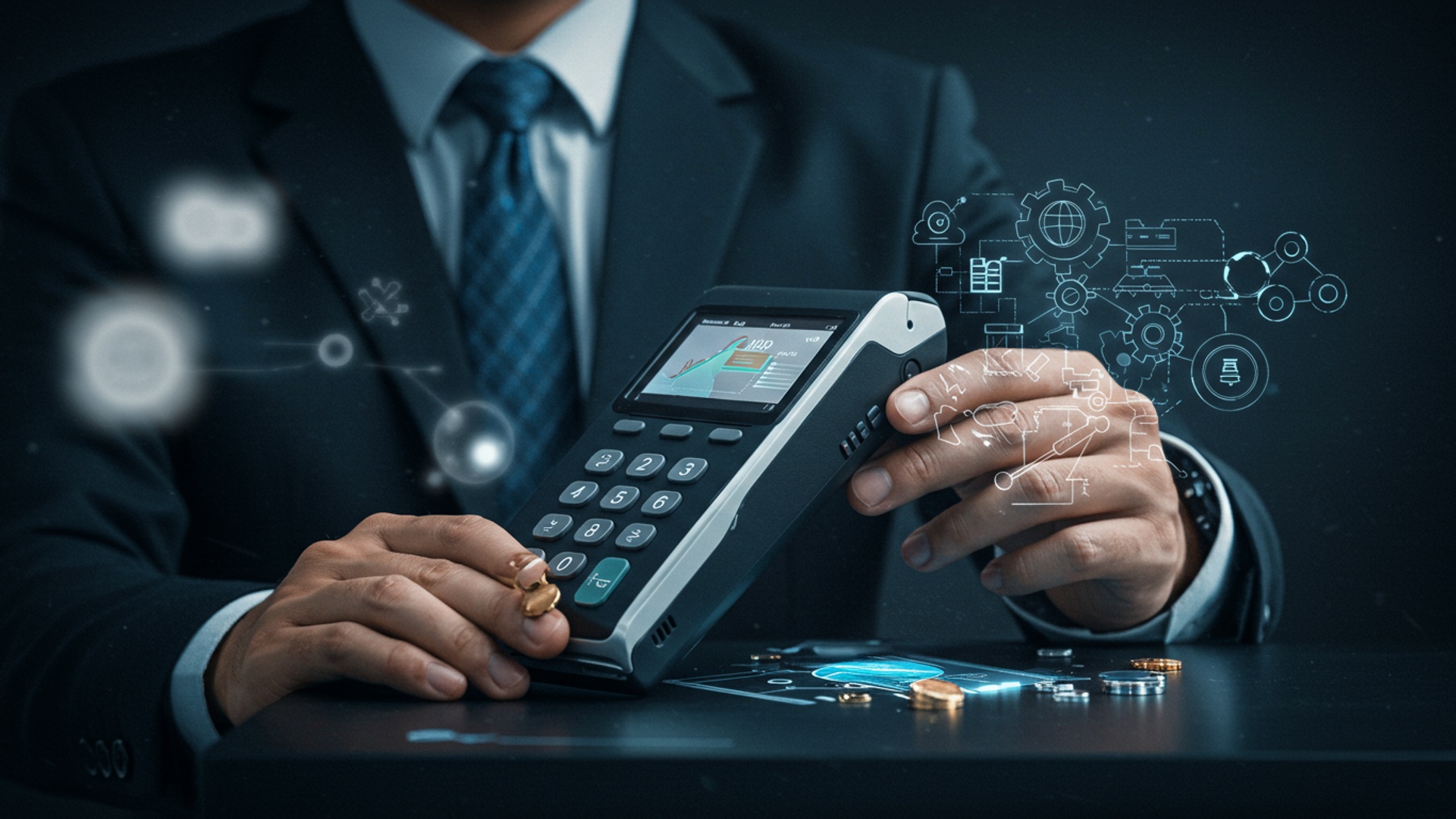
Understanding POS Software: More Than Just a Cash Register
In today’s fast-paced retail and hospitality environments, effective management of sales and inventory is paramount to success. This is where pos software, or Point of Sale software, becomes an indispensable tool. Far beyond the traditional cash register, modern POS software is a comprehensive system designed to streamline business operations, from processing transactions to managing complex inventory levels and customer relationships.
At its core, pos software facilitates the crucial moment of purchase, acting as the central hub where sales data is captured. But, its capabilities extend significantly further:
- Sales Processing
- Inventory Management
- Customer Relationship Management (CRM)
- Reporting and Analytics
- Employee Management
Handles all types of transactions, including cash, credit/debit cards, mobile payments. gift cards. It can apply discounts, manage returns. process refunds efficiently.
This is a cornerstone feature. POS software tracks product stock levels in real-time, alerts you to low stock, manages variations (size, color). can even automate reordering processes. This helps businesses avoid stockouts and overstocking, optimizing cash flow and minimizing waste.
Many POS systems integrate CRM functionalities, allowing businesses to collect customer data, track purchase history, manage loyalty programs. personalize marketing efforts.
Generates detailed reports on sales trends, popular products, employee performance. peak hours. These insights are invaluable for strategic decision-making and identifying areas for improvement.
Some advanced pos software includes features for managing employee shifts, tracking hours. monitoring individual sales performance.
For any business aiming for seamless operations, reduced manual errors. actionable insights, investing in robust pos software is no longer an option but a necessity. It empowers businesses to operate more efficiently, enhance customer experiences. ultimately drive profitability.
Key Considerations Before Choosing Your POS Software
Before diving into implementation, selecting the right pos software is a critical first step. A thoughtful evaluation of your business needs and available solutions will prevent costly mistakes and ensure a smooth transition. Consider the following factors:
- Business Type and Size
- Required Features
- Hardware Compatibility
- Scalability
- Integrations
- Pricing Model
- Security Features
- Vendor Support and Training
A small boutique’s needs will differ significantly from a multi-location restaurant chain. Some POS systems are specialized for specific industries (e. g. , retail, restaurant, salon).
Beyond basic sales processing, what advanced functionalities do you need? Do you require robust inventory management, detailed reporting, integrated CRM, employee management, or e-commerce synchronization? Make a prioritized list.
Will the pos software integrate seamlessly with your existing hardware (scanners, receipt printers, cash drawers, payment terminals) or will you need to invest in new equipment? Cloud-based solutions often offer more flexibility.
Choose a system that can grow with your business. If you plan to open new locations or expand your product lines, ensure the software can accommodate future needs without requiring a complete overhaul.
How well does the pos software integrate with other essential business tools, such as accounting software (e. g. , QuickBooks, Xero), e-commerce platforms (e. g. , Shopify, WooCommerce), or marketing automation systems? Seamless integration reduces manual data entry and improves data accuracy.
interpret the costs involved, including subscription fees (monthly/annually), hardware costs, transaction fees. any potential setup or training fees. Compare different vendors’ pricing structures.
Data security is paramount. Ensure the pos software complies with industry standards (e. g. , PCI DSS for payment processing) and offers features like user access controls, data encryption. regular backups.
Evaluate the quality of customer support. Is it available 24/7? What training resources are provided? Reliable support is crucial, especially during and after implementation.
By thoroughly assessing these points, you can narrow down your options and select pos software that truly aligns with your operational requirements and strategic goals.
The Step-by-Step Implementation Process
Implementing new pos software can seem daunting. by breaking it down into manageable steps, you can ensure a successful transition. This phased approach minimizes disruption and maximizes efficiency.
Planning and Preparation
The foundation of any successful implementation is meticulous planning.
- Form a Project Team
- Data Audit and Clean-up
- Hardware Procurement
- Network Setup
Designate a lead and include representatives from various departments (sales, inventory, finance) who will be using the system. Their input is vital.
Before migrating, thoroughly audit your existing inventory, customer. supplier data. Remove duplicates, correct errors. standardize formats. This is crucial for accurate reporting and smooth operation. For instance, if you’re a small bookstore currently managing inventory on a spreadsheet, ensure every book has a unique ISBN or SKU, consistent pricing. accurate stock counts.
Identify any necessary hardware upgrades or new purchases. This might include POS terminals (tablets or dedicated workstations), barcode scanners, receipt printers, cash drawers. customer-facing displays. Ensure compatibility with your chosen pos software.
A reliable internet connection is fundamental, especially for cloud-based POS systems. Ensure your network infrastructure can support the new software and connected devices.
Software Installation and Configuration
Once planning is complete, it’s time to get the system up and running.
- Installation
- Initial Setup
- User Roles and Permissions
For cloud-based pos software, this often involves simply signing up and accessing the system via a web browser or app. On-premise solutions will require local installation on your computers.
Configure core business data such as company details, tax rates, currency, store locations. operating hours. Set up payment methods you accept (cash, credit cards, mobile payments).
Define different user roles (e. g. , administrator, cashier, inventory manager) and assign appropriate permissions to each. This ensures data security and operational integrity.
Inventory Data Migration
This is often the most critical and time-consuming part, especially for businesses with extensive product catalogs.
- Cleaning and Formatting Data
- Importing Products
- Barcode Generation/Integration
- Real-world Example
As mentioned, prior data clean-up is essential. Most pos software allows bulk import via CSV or Excel files. Ensure your data matches the required format precisely.
Upload all product data, including SKUs, product names, descriptions, categories, pricing, cost, supplier details. initial stock levels. Include product images if your system supports them.
If your products don’t have barcodes, your pos software might be able to generate them. If they do, ensure your scanner can read them and the system accurately links them to the correct products.
A small apparel boutique, “Thread & Needle,” previously tracked inventory manually. Migrating to a new pos software, they meticulously categorized each garment by style, size. color, assigning unique SKUs. They used the POS system’s barcode generation feature to print new labels, which significantly sped up checkouts and inventory counts. This initial effort, though arduous, paid off in real-time stock visibility and reduced manual errors.
Staff Training
Your team is the front line. Proper training ensures they can leverage the system effectively.
- Comprehensive Training Sessions
- Role-Specific Training
- Practice Scenarios
- Troubleshooting Basics
Conduct hands-on training for all staff who will interact with the pos software. Cover all essential functions, from processing sales and returns to basic inventory lookups.
Tailor training to different roles. Cashiers need to master transaction processing, while managers require knowledge of reporting, inventory adjustments. user management.
Allow staff to practice with dummy transactions and common scenarios (e. g. , applying discounts, processing gift cards, handling returns) in a training environment before going live.
Equip staff with knowledge of common issues and how to resolve them or who to contact for support.
Testing and Go-Live
The moment of truth.
- Pilot Testing
- Transaction Simulations
- Phased Rollout vs. Big Bang
Before a full launch, consider a pilot test in a controlled environment or with a small group of staff and customers. This helps identify unforeseen issues.
Run numerous mock transactions covering all possible scenarios to ensure the system behaves as expected, especially concerning payment processing and inventory updates.
Depending on your business, you might opt for a phased rollout (e. g. , implementing in one department or location first) or a “big bang” approach where the new pos software replaces the old system entirely on a specific date. A phased approach offers more control and less risk.
Post-Implementation Review and Optimization
Implementation doesn’t end at go-live; it’s an ongoing process.
- Monitoring Performance
- Gathering Feedback
- Regular Updates and Training
Continuously monitor the system’s performance, transaction speeds. data accuracy.
Regularly solicit feedback from staff on their experience with the new pos software. Identify pain points and areas for improvement.
Stay informed about software updates and new features. Provide ongoing training to ensure staff utilize the system’s full potential.
Advanced Features and Integrations for Enhanced Efficiency
Modern pos software offers a suite of advanced features and integrations that can significantly boost operational efficiency and customer engagement. Leveraging these capabilities transforms your POS from a simple transaction tool into a powerful business management system.
- CRM Capabilities
- Loyalty Programs
- E-commerce Synchronization
- Accounting Software Integration
- Employee Management
- Advanced Reporting and Analytics
- Multi-Store Management
Beyond basic customer data, integrated CRM allows for tracking purchase history, preferences. loyalty points. This data can drive personalized marketing campaigns, special offers. improve customer retention. For example, a coffee shop using pos software with CRM can track a customer’s favorite drink and offer a personalized discount on their birthday.
Implement tiered loyalty programs, points systems, or gift card management directly through your POS. This encourages repeat business and builds customer loyalty without requiring separate third-party solutions.
For businesses with an online presence, seamless integration between your physical store’s pos software and your e-commerce platform (like Shopify or WooCommerce) is vital. This ensures inventory levels are always accurate across all sales channels, preventing overselling and improving customer satisfaction.
Linking your pos software with accounting platforms (e. g. , QuickBooks Online, Xero) automates financial data entry, reduces manual errors. provides a real-time overview of your business’s financial health. Sales, returns. cost of goods sold are automatically synced, saving countless hours in reconciliation.
Advanced POS systems can include time clock functionalities, shift scheduling. performance tracking. This streamlines payroll processing and helps managers optimize staffing levels based on sales data.
Go beyond basic sales reports. Look for features like predictive analytics for inventory forecasting, detailed customer segmentation reports. multi-location performance comparisons. These insights enable data-driven decisions that can significantly impact profitability.
For businesses with multiple locations, centralized pos software allows you to manage inventory, pricing, promotions. employee data across all stores from a single dashboard, providing a holistic view of your entire operation.
By strategically integrating and utilizing these advanced features, businesses can create a highly efficient ecosystem that supports growth, enhances customer experiences. provides unparalleled operational visibility.
Common Pitfalls to Avoid During POS Software Implementation
While the benefits of implementing new pos software are clear, the process is not without its challenges. Being aware of common pitfalls can help businesses navigate the transition more smoothly and avoid costly mistakes.
- Lack of Clear Objectives
- Insufficient Staff Training
- Poor Data Quality
- Ignoring Hardware Compatibility
- Underestimating Support Needs
- Resistance to Change
- Neglecting Post-Implementation Review
Rushing into selecting and implementing pos software without a clear understanding of your business goals and specific needs is a recipe for disaster. Without defined objectives (e. g. , “reduce inventory discrepancies by 15%,” “decrease checkout time by 20%”), it’s difficult to choose the right system or measure success.
As mentioned, inadequate training is a major pitfall. Staff who are uncomfortable or unfamiliar with the new system can lead to slow checkouts, errors. frustration, potentially impacting customer experience and operational efficiency. Invest time and resources in comprehensive, hands-on training.
Migrating dirty or inaccurate data (duplicate entries, incorrect prices, outdated stock counts) will only lead to dirty and inaccurate data in your new pos software. This undermines the very purpose of a modern POS system, leading to incorrect reports and operational headaches. Data cleansing must be a priority.
Assuming your existing hardware will work with any new pos software is a common mistake. Incompatible printers, scanners, or payment terminals can lead to unexpected costs and delays. Always verify hardware requirements and compatibility before making a purchase.
Even the most user-friendly pos software can present challenges. Underestimating the need for robust vendor support, especially during the initial weeks post-launch, can leave your team feeling unsupported and hinder problem resolution. Evaluate support channels, response times. training resources provided by the vendor.
Human elements often pose the biggest challenge. Employees accustomed to an old system might resist adopting new pos software. Address concerns proactively, communicate the benefits clearly, involve staff in the process. provide consistent encouragement and support to foster acceptance.
The implementation isn’t over once the system is live. Failing to review performance, gather feedback. make necessary adjustments means you’re not fully optimizing your investment. Regular audits and updates are crucial for long-term success.
By proactively addressing these potential issues, businesses can significantly increase the likelihood of a successful and seamless pos software implementation.
Case Study: A Restaurant’s Successful POS Transformation
Let’s consider “The Gilded Spoon,” a popular mid-sized restaurant with a busy dining room and a growing takeout service. Before implementing new pos software, they faced several challenges:
- Manual Order Taking
- Inventory Headaches
- Slow Checkout
- Lack of Data
Waitstaff used notepads, leading to illegible orders, miscommunications with the kitchen. slow table turnover.
Stock counts were done manually once a week, resulting in frequent ingredient shortages and significant food waste due to poor tracking.
Cashiers manually entered orders into a basic register, leading to long lines during peak hours and errors in splitting bills.
Ownership had no real-time insights into best-selling dishes, peak service times, or staff performance, making strategic decisions difficult.
Recognizing these inefficiencies, The Gilded Spoon decided to invest in a robust, industry-specific pos software solution. Their implementation journey unfolded as follows:
- Needs Assessment
- Vendor Selection
- Hardware Installation
- Menu Digitization & Inventory Setup
- Staff Training
- Phased Rollout
They identified key requirements: table management, kitchen display system (KDS), detailed inventory tracking, integrated payment processing. robust reporting.
After comparing several restaurant-specific pos software options, they chose one known for its intuitive interface and strong inventory modules.
They installed touch-screen terminals for waitstaff to take orders directly at the table, KDS screens in the kitchen to display orders instantly. integrated payment terminals.
Every menu item, including modifiers and ingredients, was meticulously entered into the pos software. Recipes were linked to inventory items, enabling automatic deduction of ingredients with each order. Initial inventory counts were painstakingly entered and verified.
Over two weeks, waitstaff, kitchen staff. management underwent intensive training. They practiced taking orders, sending them to the KDS, processing payments. even simulating complex scenarios like splitting checks and applying discounts.
Instead of a “big bang,” they started with the takeout service for a week, ironing out kinks. Then, they rolled it out to the dining room during slower lunch shifts before full implementation.
The transformation was remarkable:
- Faster Service
- Optimized Inventory
- Improved Customer Experience
- Data-Driven Decisions
Orders went directly to the kitchen via the KDS, reducing order errors by 80% and significantly speeding up food preparation and delivery to tables.
Real-time ingredient tracking through the pos software led to a 25% reduction in food waste and ensured popular items were always in stock. Automated reorder alerts streamlined purchasing.
Faster checkouts and accurate bill splitting led to happier customers and increased table turnover. The integrated loyalty program helped identify and reward regulars.
Management gained access to detailed reports on best-selling dishes, peak hours. server performance, allowing them to optimize staffing, adjust menu offerings. launch targeted promotions. For instance, they discovered that a specific dessert sold exceptionally well on Friday nights, prompting them to increase its stock and promote it more heavily on that day.
The Gilded Spoon’s journey demonstrates how a well-planned and executed pos software implementation can revolutionize operations, enhance customer satisfaction. drive significant business growth.
Conclusion
Implementing POS software is not merely a technical upgrade; it’s a strategic pivot towards operational excellence. True seamlessness in sales and inventory, like the transformation I witnessed in a small fashion boutique that dramatically cut stock discrepancies by 70% post-implementation, stems from thoughtful planning and consistent team engagement. My personal tip: prioritize user training from day one. A sophisticated system is only as good as its users’ proficiency. Moreover, with current trends leaning into cloud-based AI analytics, leveraging your POS data for predictive inventory management, rather than just reactive counting, becomes paramount for truly optimizing cash flow and customer satisfaction. Embrace this shift. watch your business not just survive. truly thrive in a competitive market.
More Articles
Learn 8 Smart Inventory Control Strategies Using POS in India
How to Master Billing and POS Software for Efficient Retail Management
How to Streamline Billing and POS Software for Efficient Sales and Inventory Management
7 Essential Inventory Management POS Tips for Indian Businesses
Simplify Restaurant Operations How to Select Ideal POS Software
FAQs
What exactly is POS software and why should my business bother with it?
POS (Point of Sale) software is essentially the system that handles all your customer transactions. It’s where sales are processed, payments are taken. receipts are generated. You need it because it automates crucial tasks, helps track inventory accurately, streamlines sales. provides valuable data on your business performance, making everything smoother and more efficient than old-school cash registers.
There are so many POS systems out there – how do I pick the best one for my business?
Start by listing your specific needs. Do you run a retail store, a restaurant, or a service business? Consider features like inventory management, customer relationship management (CRM), reporting, payment processing options. ease of use. Also, think about your budget, whether you need mobile capabilities. how well it can integrate with other tools you already use. Reading reviews and getting demos can help a lot.
Okay, I’ve got my POS software. What’s the very first thing I should do to get it up and running?
The absolute first step is usually to install the software (if it’s not cloud-based) and configure your basic business insights. This includes setting up your store details, tax rates. connecting any hardware like barcode scanners or receipt printers. Most systems have a guided setup process to walk you through these initial configurations.
Ugh, entering all my products sounds like a nightmare. Is there an easy way to get my inventory loaded into the POS?
It doesn’t have to be! Many POS systems allow you to import your product list from a spreadsheet (like an Excel CSV file). You’ll typically need columns for product name, SKU, price, quantity. a brief description. If you have a smaller inventory, manual entry is an option. importing is definitely the way to go for larger selections. Make sure your data is clean before importing!
My team isn’t super tech-savvy. How do I make sure they actually learn to use the new POS without a huge headache?
Staff training is key! Start with a clear, step-by-step demonstration of common tasks like processing sales, returns. checking inventory. Let them practice in a test environment before going live. Provide simple cheat sheets or quick reference guides. designate a go-to person for questions. Emphasize how the new system makes their jobs easier, not harder, to encourage adoption.
I use other software for accounting and marketing. Can my new POS system talk to those?
Absolutely! Many modern POS systems offer integrations with popular accounting software (like QuickBooks or Xero), e-commerce platforms. CRM tools. Check the system’s features or ask the vendor about their integration capabilities. This ensures data flows smoothly between your different systems, avoiding manual data entry and keeping everything in sync.
Once everything’s set up and running, what kind of support can I count on if issues pop up?
A good POS provider should offer robust ongoing support. This typically includes technical assistance via phone, email, or chat for troubleshooting, software updates to keep your system secure and up-to-date. access to online resources like knowledge bases or video tutorials. Clarify the support hours and response times before you commit to a system.


